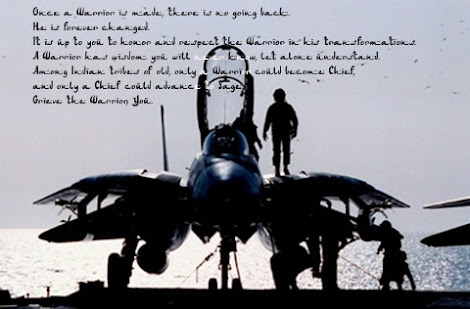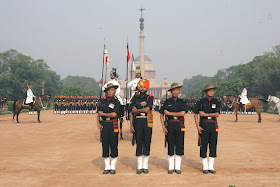F/A-18 E/F Super Hornet from the stable of Boeing is a highly upgraded version of the F/A-18 A-D Hornet. Super hornet is much more enlarged and given new engines and avionics. Strengths include its powerful AN/APG-79 AESA radar, which has drawn significant interest from India. The Performance of AESA radar is really impressive and the results have prompted large air forces to induct different varieties of the radar on the older and newer fighter aircrafts. The APG-79 radar could allow Super Hornets to play a unique role in India’s fighter
 fleet as versatile “quarterbacks” (or better yet, “cricket captains”) due to their radar’s performance and information sharing abilities. Other advantages include carrier capability; a very wide range of integrated weapons; a design that is proven in service and in combat; and complete assurance in its future upgrade spiral given the US Navy’s commitment to it. The existence of a dedicated electronic warfare variant as of 2009 in the EA-18G Growler may also be a potent motivator, as long-range strike and carrier strike will increasingly require this unique capability.If Indian Air Force considers super hornet ,it would be natural to think about Growlers also for ECM conflicts. Last but certainly not least, this choice offers an opportunity to create an early “win” which would strengthen India’s new alliance with the USA and prove its new status in the world. After all, when clearance for the aircraft was given, no other nation had even been offered the F/A-18 E/F Super Hornet. The aircraft is also being fitted with new mission computers, fibre-optic network, Raytheon AN/ASQ-228 ATFLIR targeting pod, Boeing joint helmet-mounted cueing system.The aircraft will also mark the introduction of American Air armaments like Raytheon’s AIM-9X next generation Sidewinder air-to-air missile. Talking About weapons payload capacity, the Super Hornet has 11 weapon stations which include two additional wing store stations and will support a full range of Western armaments including AIM-9 Sidewinder, AIM-7 Sparrow and AIM-120 AMRAAM air-to-air missiles, guided air-to-ground weapons such as Harpoon, SLAM/SLAM-ER, GBU-10, GBU-51, HARM and Maverick; and free-fall air-to-ground bombs, Mk-76, BDU-48, Mk-82LD, Mk-82HD and Mk-84. The aircraft can also carry the GPS- / inertially guided JDAM (Joint Direct Attack Munition), JSOW (Joint StandOff Weapon) and JASSM (Joint Air-to-Surface Standoff Missile).Of Course IAF will press for a greater flexibility in weapons payload since it already operates weapons of Russian, French and Israeli Origin. If Successful, Boeing will make a whole new variant of fighter which can be armed with almost any Air Armament. The cockpit in the F/A-18E/F is equipped with a touch-sensitive control display, a larger multi-purpose liquid crystal colour display, which shows tactical information, two monochrome displays and a new engine fuel display. The E/F version of the aircraft retains the mission software and a high proportion of the avionics found in the C/D models. The cockpit also has a colour digital map and the pilots are equipped with night-vision goggles for round the clock deployment. The zero/zero ejection seat is the SJU-5/6 from Martin Baker Aircraft Company, which is standard for most of the fighters of western origin.
fleet as versatile “quarterbacks” (or better yet, “cricket captains”) due to their radar’s performance and information sharing abilities. Other advantages include carrier capability; a very wide range of integrated weapons; a design that is proven in service and in combat; and complete assurance in its future upgrade spiral given the US Navy’s commitment to it. The existence of a dedicated electronic warfare variant as of 2009 in the EA-18G Growler may also be a potent motivator, as long-range strike and carrier strike will increasingly require this unique capability.If Indian Air Force considers super hornet ,it would be natural to think about Growlers also for ECM conflicts. Last but certainly not least, this choice offers an opportunity to create an early “win” which would strengthen India’s new alliance with the USA and prove its new status in the world. After all, when clearance for the aircraft was given, no other nation had even been offered the F/A-18 E/F Super Hornet. The aircraft is also being fitted with new mission computers, fibre-optic network, Raytheon AN/ASQ-228 ATFLIR targeting pod, Boeing joint helmet-mounted cueing system.The aircraft will also mark the introduction of American Air armaments like Raytheon’s AIM-9X next generation Sidewinder air-to-air missile. Talking About weapons payload capacity, the Super Hornet has 11 weapon stations which include two additional wing store stations and will support a full range of Western armaments including AIM-9 Sidewinder, AIM-7 Sparrow and AIM-120 AMRAAM air-to-air missiles, guided air-to-ground weapons such as Harpoon, SLAM/SLAM-ER, GBU-10, GBU-51, HARM and Maverick; and free-fall air-to-ground bombs, Mk-76, BDU-48, Mk-82LD, Mk-82HD and Mk-84. The aircraft can also carry the GPS- / inertially guided JDAM (Joint Direct Attack Munition), JSOW (Joint StandOff Weapon) and JASSM (Joint Air-to-Surface Standoff Missile).Of Course IAF will press for a greater flexibility in weapons payload since it already operates weapons of Russian, French and Israeli Origin. If Successful, Boeing will make a whole new variant of fighter which can be armed with almost any Air Armament. The cockpit in the F/A-18E/F is equipped with a touch-sensitive control display, a larger multi-purpose liquid crystal colour display, which shows tactical information, two monochrome displays and a new engine fuel display. The E/F version of the aircraft retains the mission software and a high proportion of the avionics found in the C/D models. The cockpit also has a colour digital map and the pilots are equipped with night-vision goggles for round the clock deployment. The zero/zero ejection seat is the SJU-5/6 from Martin Baker Aircraft Company, which is standard for most of the fighters of western origin.Boeing’s planned $1.5 billion investment in India’s aerospace market may help deal with industrial offset issues; the Super Hornet’s Boeing connection adds many options in the civil aircraft market as well. And this point makes sense also since Indian Civilian AirTravel Industry is looking aggressive and are expected to undertake huge expansion projects.
Weaknesses of the Super Hornet platform include the aircraft’s expense; given the costs to other customers so far, it seems unlikely that Boeing can deliver 126 F/A-18 E/F Block II aircraft for just $10.2 billion, let alone aircraft plus lifetime support. The Super Hornet also offers poorer aerodynamic performance than the Eurofighter or Rafale due to inherent airframe limitations.Indian Air Force like Israeli Air Force emphasizes on High degree of aerodynamic strengths for their Fighter Aircrafts and Training for Close quarter Air-Combats. Finally, it’s a new aircraft type for the IAF, so the entire support infrastructure would have to be developed from the ground up.
Personally I feel that this aircraft has good chance of becoming the winner of the deal if it can beat MiG-35 in evaluations and price tag.






















0 comments:
Post a Comment